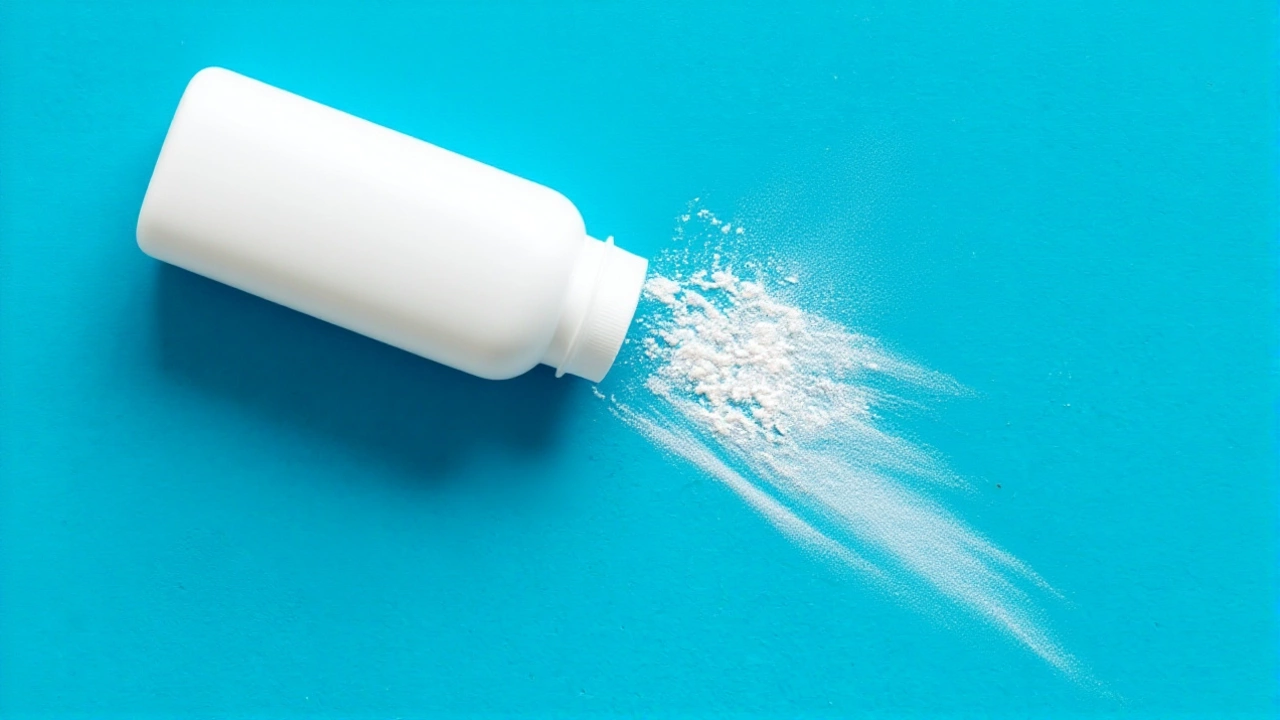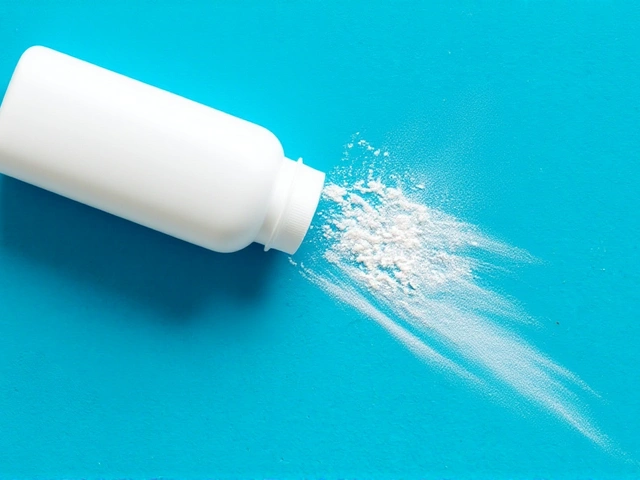J&J Hit with $966 Million Los Angeles Verdict as Talc Lawsuits Surge

When Mae Moore, an 88‑year‑old resident of Los Angeles, died of mesothelioma last month, a jury in the Los Angeles County Superior Court ordered Johnson & Johnson to pay $966 million to her family. The verdict, handed down on October 15, 2025, includes $950 million in punitive damages and $16 million in compensatory damages – one of the largest single talc‑powder verdicts ever recorded. Joaquin Duato, Chairman and CEO of Johnson & Johnson, has pledged to appeal, but the case adds fresh pressure to a litigation firestorm that already engulfs the company.
Background of the Talc Litigation
Since the early 2000s, consumers, doctors and regulators have warned that talc – the fine mineral powder used in baby powder, body moisturizers and makeup – can be contaminated with asbestos fibers, a known cause of mesothelioma and ovarian cancer. Internal documents obtained during earlier trials suggest that Johnson & Johnson knew, as early as the 1970s, that some of its talc supplies tested positive for asbestos but continued to market the product without a warning.
The federal multidistrict litigation (MDL 2738) was consolidated in the U.S. District Court for the District of New Jersey under Judge Michael A. Shipp. As of September 2025, the MDL contains at least 66,910 cases, a figure that grew by almost 7 % between June and July 2025 – the steepest monthly jump on record.
Beyond the federal docket, state courts have become hotbeds for individual trials. California alone lists more than 1,200 active talc cases, ranging from mesothelioma to ovarian‑cancer claims. The sheer volume has forced courts to create specialized mass‑tort programs, such as the new Philadelphia initiative launched in June 2025.
The Los Angeles Verdict and Its Details
The Moore case was tried before a jury of six women and six men under the watchful eye of Judge Monica Bachner. Over six weeks, plaintiffs presented decades‑long usage records, medical histories and internal Johnson & Johnson emails that allegedly proved asbestos contamination.
After 14 days of deliberation, the jury rendered a $966 million verdict – $950 million punitive, meant to punish the company for what jurors called a "deliberate deception," and $16 million compensatory, covering the family’s medical and funeral expenses.
"There are other causes of ovarian cancer, but the asbestos link to mesothelioma is clear," said Daniel Nigh, senior partner at Nigh Goldenberg Raso & Vaughn. "Multiple epidemiological studies have shown an increased risk, and the evidence in this case was undeniable."
- Verdict amount: $966 million
- Punitive damages: $950 million
- Compensatory damages: $16 million
- Trial length: 6 weeks of testimony, 14 days of deliberation
- Jury composition: 6 women, 6 men
Broader Legal Landscape Across the U.S.
Just weeks earlier, on March 15, 2025, Judge Michael Wiles, a U.S. bankruptcy judge, rejected Johnson & Johnson’s proposal to create an $8.9 billion trust that would have settled all current and future ovarian‑cancer claims. The judge said the company had not demonstrated the "financial distress" necessary to invoke bankruptcy, effectively keeping the litigation alive in state and federal courts.
In July 2024, the company did agree to a $700 million settlement with a coalition of 42 states and the District of Columbia, led by Rob Bonta, California Attorney General, and Letitia James, New York Attorney General. That deal covered allegations that J&J misled consumers about talc safety, but it did not address the individual personal‑injury claims still raging in courts.
Other notable verdicts include an $8 million award in Boston (June 29, 2025) and a $52.1 million mesothelioma verdict against Avon in March 2025, underscoring that the legal fire isn’t limited to one manufacturer.
Reactions from Companies, Plaintiffs and Experts
Johnson & Johnson’s spokesperson said the company “continues to stand by the safety of its talc‑based products and will vigorously defend against any improper claims.” The firm, headquartered at One Johnson & Johnson Plaza, New Brunswick, New Jersey, maintains that its talc is asbestos‑free – a claim that scientists and consumer‑advocacy groups dispute.
Consumer‑rights groups celebrated the Moore verdict as a landmark win that could pressure the company into a broader settlement. "When a jury hands down a near‑billion‑dollar judgment, it sends a clear message to corporations that they cannot hide behind vague safety assurances," said a representative of the Consumer Federation of America.
Legal scholars note that the volume of cases, combined with the high punitive awards, could force Johnson & Johnson into a consolidated settlement strategy similar to the 2015 $2.1 billion opioid agreement. "If the trend continues, we could see a national talc trust formed outside of bankruptcy, perhaps through a negotiated fund," observed Professor Amelia Ortiz of Harvard Law School.
What Lies Ahead for J&J and Consumers
The next few months will be pivotal. Two bellwether trials are slated for February and March 2026 in Philadelphia, overseen by Judge Gary S. Glazer. Those cases could set binding precedents on damages calculations and the admissibility of internal documents.
Meanwhile, the MDL continues to accept new filings at a rapid pace. Industry analysts predict that if the current 7 % monthly growth persists, the docket could swell beyond 80,000 cases by mid‑2026, creating unprecedented pressure on the judicial system and on Johnson & Johnson’s balance sheet.
For consumers, the verdict reinforces the importance of staying informed about product ingredients. "People are waking up to the hidden risks in everyday items," said Nigh. "The legal outcomes will likely push manufacturers to be more transparent, or risk even larger financial penalties."
Frequently Asked Questions
How does the $966 million verdict affect other talc lawsuits?
The verdict establishes a high‑damage benchmark that plaintiffs in other cases can cite when negotiating settlements or presenting evidence at trial. While each case remains fact‑specific, juries may be influenced by the precedent of a near‑billion‑dollar award, potentially accelerating settlements across the nation.
What legal options does Johnson & Johnson have after the verdict?
The company can appeal the judgment on grounds such as evidentiary errors or excessive punitive damages. It may also seek a post‑trial remission, arguing that the amount is unconscionable. Simultaneously, J&J might pursue a negotiated settlement with other claimants to limit further exposure.
Why did the bankruptcy judge reject the $8.9 billion settlement?
Judge Michael Wiles concluded that Johnson & Johnson had not shown sufficient financial distress to merit a bankruptcy‑based trust. He ruled that the company’s cash flow and credit ratings remained robust, making the proposed restructuring unnecessary and potentially harmful to other creditors.
What does this mean for future talc product safety?
Regulators are likely to tighten testing requirements for talc used in cosmetics, and manufacturers may be compelled to disclose sourcing details on packaging. The heightened scrutiny could lead to reformulated products or a shift toward alternative ingredients.
Are there any ongoing federal investigations into Johnson & Johnson’s talc?
Both the U.S. Food and Drug Administration and the Federal Trade Commission have opened inquiries into labeling practices and the accuracy of safety claims. While no formal charges have been filed yet, the agencies are reviewing the same internal documents that helped secure the Los Angeles verdict.






